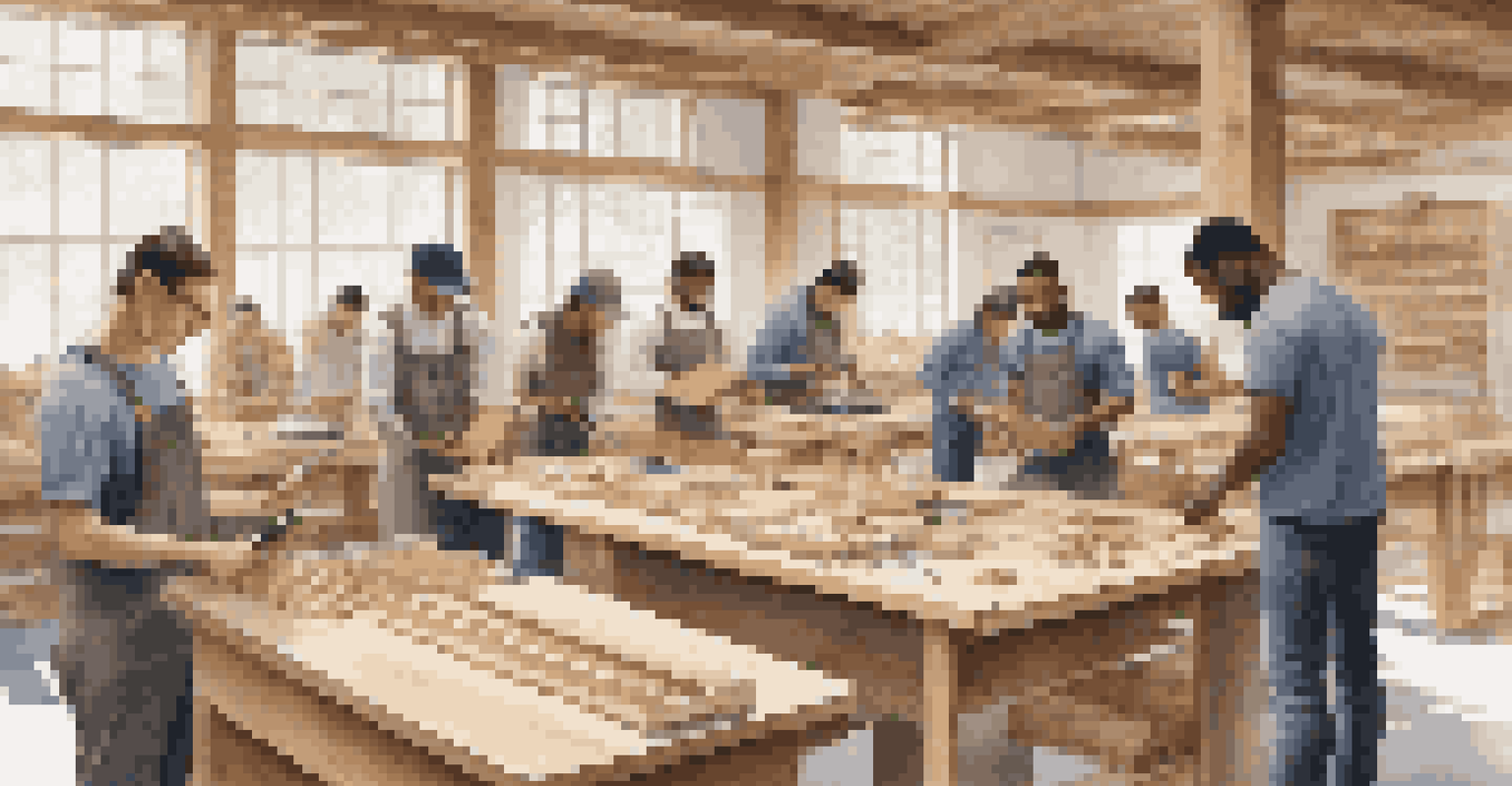The Intersection of AI and Skilled Trades Careers

Understanding AI and Skilled Trades: A New Frontier
Artificial Intelligence (AI) is often associated with tech-heavy fields, but its influence is extending into skilled trades. From electricians to plumbers, these professions are beginning to adopt AI-driven tools and technologies. This intersection of AI and skilled trades not only enhances efficiency but also opens up new avenues for workers.
The future belongs to those who prepare for it today.
Imagine a plumber using an AI-powered diagnostic tool that can detect leaks before they become visible. Such innovations not only save time but also improve the quality of work. As AI continues to evolve, it will increasingly assist skilled tradespeople in their day-to-day tasks.
The combination of AI and skilled trades can be seen as a partnership rather than a replacement. By leveraging AI, tradespeople can focus more on complex problem-solving and customer interactions, while machines handle repetitive tasks.
AI Tools Revolutionizing Skilled Trades Work
Numerous AI tools are now available that specifically cater to skilled trades. For instance, AI-powered software can help electricians design more efficient wiring systems, while construction workers can use drones equipped with AI for site surveys. These tools not only streamline processes but also reduce errors.

Consider a scenario where an HVAC technician uses AI to predict system failures based on historical data. This proactive approach not only enhances service but also builds stronger customer relationships. Clients appreciate when their service providers can anticipate their needs.
AI Enhances Skilled Trades Efficiency
The integration of AI tools allows tradespeople to complete tasks more quickly and accurately, boosting productivity.
Moreover, these AI tools are becoming more user-friendly, meaning that tradespeople don't need a tech background to benefit from them. This accessibility encourages the adoption of new technologies, allowing more individuals in skilled trades to enhance their skill sets.
Training and Upskilling in the Age of AI
As AI becomes more integrated into skilled trades, training programs are evolving to incorporate these technologies. Vocational schools and apprenticeship programs are beginning to include AI-related coursework to prepare future tradespeople. This shift is crucial for ensuring that the workforce remains relevant in a changing job landscape.
Innovation distinguishes between a leader and a follower.
For example, a carpentry program might now teach students how to use AI-driven design software alongside traditional woodworking techniques. This not only enhances their skill set but also makes them more attractive to potential employers. The goal is to create a workforce that is adaptable and well-versed in both traditional and modern methods.
Furthermore, ongoing training is essential. Experienced tradespeople can benefit from workshops that focus on new AI tools and technologies, ensuring they stay competitive. The commitment to lifelong learning is key in this rapidly changing environment.
Benefits of AI for Skilled Trades Professionals
The integration of AI into skilled trades offers numerous benefits to professionals in the field. Increased efficiency is one of the most significant advantages, allowing tradespeople to complete tasks more quickly and accurately. This efficiency translates into higher productivity and potentially greater earnings.
Additionally, AI can enhance safety on the job. For instance, AI-driven wearables can monitor workers' health metrics and alert them to potential hazards. This focus on safety not only protects workers but also reduces downtime and liability for businesses.
Training Evolves for AI Integration
Vocational programs are adapting to include AI-related coursework, preparing future tradespeople for a tech-driven landscape.
Lastly, embracing AI can lead to a more enjoyable work experience. With technology handling mundane tasks, tradespeople can engage in more creative and fulfilling aspects of their work, leading to increased job satisfaction.
Challenges of Integrating AI in Skilled Trades
While the benefits of AI in skilled trades are substantial, there are challenges to consider. One major concern is the initial investment in technology and training. Small businesses, in particular, might struggle to afford the latest AI tools, which can create disparities in the industry.
Another challenge is the potential for job displacement. Although AI is unlikely to replace skilled tradespeople entirely, there may be concerns about certain roles becoming obsolete. It’s essential to approach AI integration with a mindset focused on collaboration rather than competition.
Finally, there’s the issue of technology adoption rates. Some professionals may resist adopting new technologies due to fear of the unknown. Encouraging open dialogue about the benefits of AI and providing support can help ease these concerns and promote a smoother transition.
The Future of Skilled Trades in an AI-Driven World
Looking ahead, the future of skilled trades in an AI-driven world appears promising. As technology continues to advance, we can expect to see even more sophisticated tools that enhance the capabilities of tradespeople. This evolution could lead to new specialties within the skilled trades that focus on AI applications.
Additionally, as industries increasingly embrace AI, the demand for skilled tradespeople who can navigate this new landscape will grow. This demand could lead to more job opportunities and potentially higher wages for those who adapt to these changes.
AI Brings New Opportunities and Safety
Embracing AI not only creates new job specialties but also enhances worker safety through innovative technologies.
Ultimately, the intersection of AI and skilled trades represents a unique opportunity for professionals. By embracing this technology, tradespeople can not only improve their skills but also contribute to a more innovative and efficient workforce.
Conclusion: Embracing Change in Skilled Trades Careers
In conclusion, the intersection of AI and skilled trades is reshaping the future of these careers. While challenges exist, the potential benefits far outweigh the drawbacks. With the right training and mindset, tradespeople can harness AI to enhance their work and increase their value in the marketplace.
As we navigate this changing landscape, it’s essential for professionals to remain open to learning and adapting. The willingness to embrace new technologies will ultimately determine success in the skilled trades in the years to come.

By fostering a culture of innovation and collaboration, the skilled trades can thrive alongside AI. Together, they can create a future that not only benefits workers but also enhances the quality of services provided to customers.